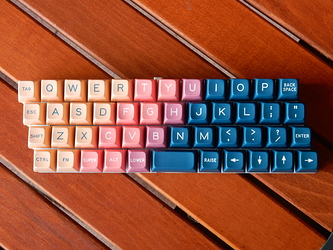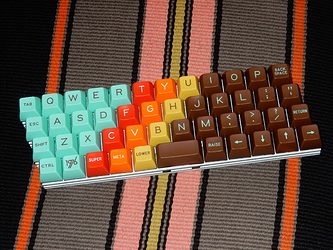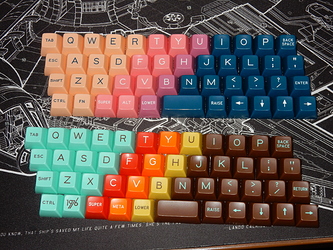I do not really want to hijack this very nice thread, but you’ve asked: ![]()
Oh, yeah, and not only wanted, but actually did. And I was really pleased with the outcome:
- I noticed that I can’t type on ortholinear keyboards (too much spoiled by QWERTY row offsets), but still wanted one, so I fell in love with the Zlant, basically a Planck layout, but with a uniform 0.25u stagger.
- I discovered SA Vilebloom only during its hype when the first GB orders were sent out and hit Reddit.
- I wanted to see how SA Vilebloom (and then also SA 1976) looks on the Zlant. But I couldn’t find any picture of these combinations on the Internet—neither with SA Vilebloom nor with SA 1976—despite they seemed an obvious fit.
So I ordered all required parts to do a Zlant built with SA Vilebloom. (The SA Vilebloom Ortholinear Set luckily wasn’t yet sold out. ![]() ) I also ordered the Ortho Set of SA 1976 for comparison.
) I also ordered the Ortho Set of SA 1976 for comparison.
And here’s the outcome:
I definitely like SA Vilebloom on the Zlant more as the color jumps are less hard and hence more eye-pleasing, but also maybe because SA 1976 is “only” SA row 3 while SA Vilebloom is fully sculpted, i.e. R2, R3, R4, R3.
And even despite SA Vilebloom’s colors are not that much mine—but the overall design of it is gorgeous—this board (with Kailh Box Royal switches, leftovers from my first 40% build) became one of my favourite travel and (via a tiny in-plug USB OTG adapter) mobile/tablet keyboards—besides the MiniVan.


